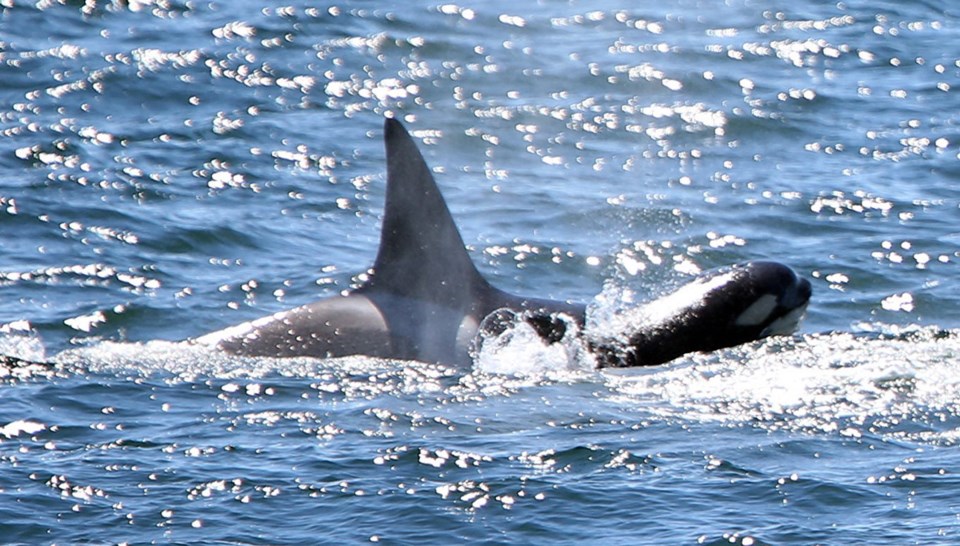In the wake of a confrontation between a whale-watching boat and the Royal Canadian Navy two weeks ago, both sides are working together to protect whales from underwater explosions.
At a meeting Wednesday at CFB Esquimalt, Pacific Whale Watch Association spokesman Dan Kukat met with the navy’s environmental and demolition experts and base chief of staff Danielle Smith.
The two sides agreed to streamline communications to allow Kukat to alert the navy immediately when whales are spotted near Bentinck Island in Race Passage, so blasting can be stopped.
Navy ships from CFB Esquimalt often conduct exercises with explosives at Bentinck Island in Juan de Fuca Strait and follow protocols to stop blasting if boats or whales breach a one-kilometre buffer zone.
Starting today, if Kukat receives information about whales near the navy’s firing and explosive range, he can call the operations centre, which has a direct line to the range safety officer, said Lt.-Cmdr. John Nethercott, spokesman for the Royal Canadian Navy.
And, on the water, tour boat operators can approach sentry boats, enforcing the safety zone, and let them know when whales are in the area during training exercises, Nethercott said.
“The sentry can then radio the range safety officer … and recommend they cease training. And they will.”
Kukat said he was satisfied with the meeting.
“The navy took our concerns extremely seriously. They’re responsive. They had a lot of information and had reviewed the incident that day. They’ve taken measures to make sure this wouldn’t happen again,” said Kukat.
On Aug. 3, Eagle Wings Tour skipper Rod King drove his boat, carrying about 50 passengers, into a restricted zone to stop the firing of explosives near a pod of orcas.
“I just put my boat in harm’s way, so to speak,” King said at the time. “I wouldn’t leave until they shut it down.”
King said he approached the sentry and told him to radio his superior and stop the explosions.
“It took me getting into his face and getting into a bit of a yelling match in front of all my passengers to get him to stop,” King said. “He finally got on the radio and talked to his boss.”
Nethercott said the navy thought it in the best interests of everyone to get together around the table for a chat.
“We had a very productive meeting. We gave Dan an overview of our operating procedures when we use the range as part of our marine mammal mitigation process, which he was very appreciative of. The bottom line is we all reaffirmed our commitment to protecting marine mammal wildlife.”
The sentry was enforcing a safety zone that day and he did his job, Nethercott said.
For the past 10 years, Kukat has been the key communications link from the whale-watching operators to the navy.
“Other than this one little incident, it had always gone swimmingly well. And since this, on Monday morning, transient killer whales came into the area of Race Passage and the navy was immediately responsive and halted their blasting exercises until the transient whales were clear,” said Kukat.
“It was textbook.”
The navy has offered to hold an information session for boat captains to discuss their mitigation measures for underwater blasting and sound propagation in and over water, said Nethercott.
“That informs the discussion. And then everyone is working from the same book, and we can avoid the thing that happened in early August,” he said.
“We are always looking to be good stewards, but sometimes the nature of our work means we have to train as we fight. We have to create situations that are realistic in order to prepare our people for what they may be faced with in the future.”
Kukat said both sides are moving forward and turning the page on the Aug. 3 incident.
“I truly believe the navy does place a very high priority on the safety of killer whales,” said Kukat, who will be talking to the owners and captains of all the whale watching companies about the new protocols.
— with files from Richard Watts



